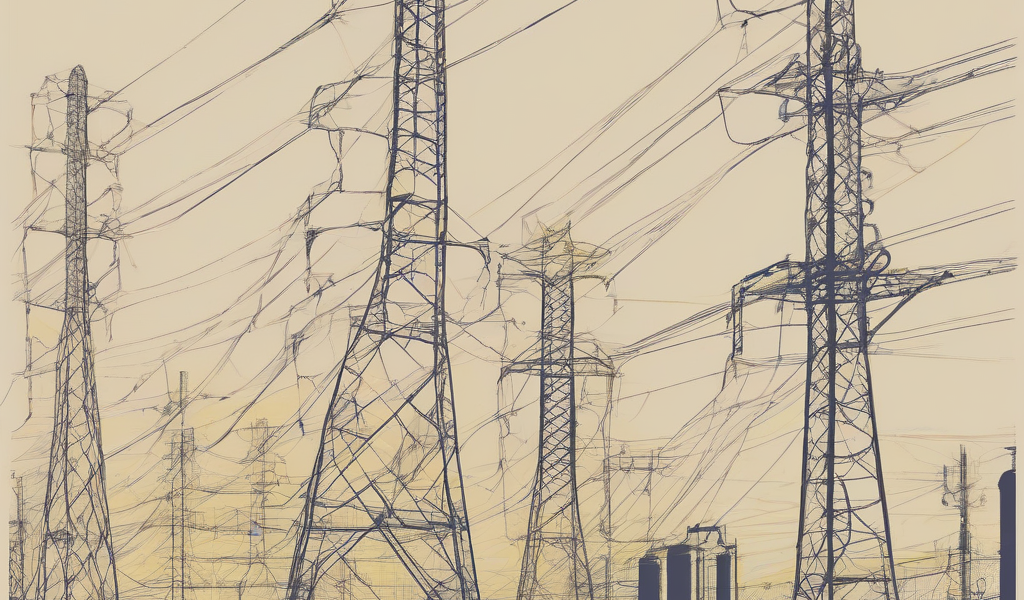Powering Progress: A Deep Dive into the World of Electricity Service Providers
Electricity service providers, often referred to as utilities, play a critical role in modern society. These companies are responsible for the generation, transmission, distribution, and sale of electricity, forming the backbone of our energy infrastructure. Understanding their operations, challenges, and future is vital for navigating the complexities of the energy landscape.
Types of Electricity Service Providers
- Investor-Owned Utilities (IOUs): These are publicly traded companies that operate for profit. Their primary goal is to maximize shareholder value while providing reliable electricity service. Examples include large multinational corporations with extensive generation and distribution networks.
- Municipal Utilities: Owned and operated by local governments, these utilities typically serve smaller geographic areas. They often prioritize community needs and may offer lower rates than IOUs, although their financial flexibility might be more limited.
- Cooperatives: These are not-for-profit organizations owned by their customers. They focus on serving the needs of their members, often prioritizing affordability and community engagement. Decision-making is usually democratic, involving member participation.
- Independent Power Producers (IPPs): These companies specialize in generating electricity, often from renewable sources such as wind, solar, or hydro. They typically sell the power they generate to utilities or directly to large consumers.
- Retail Electricity Providers (REPs): In deregulated markets, REPs purchase electricity from wholesale markets and sell it directly to consumers. They compete based on price and service offerings, allowing customers to choose their electricity supplier.
The Electricity Supply Chain
The process of getting electricity from generation to consumption involves several key stages:
- Generation: Power plants, utilizing various technologies (coal, natural gas, nuclear, renewable sources), convert fuel into electricity.
- Transmission: High-voltage transmission lines transport electricity over long distances from generation sources to substations.
- Substations: These facilities step down the voltage to lower levels suitable for distribution networks.
- Distribution: Lower-voltage lines deliver electricity to individual homes and businesses.
- Metering: Meters track electricity consumption, allowing utilities to bill customers accurately.
- Billing and Customer Service: Utilities handle billing, customer inquiries, and service disruptions.
Challenges Faced by Electricity Service Providers
- Aging Infrastructure: Many electricity grids are aging, requiring significant investment in upgrades and maintenance to ensure reliability.
- Renewable Energy Integration: Integrating intermittent renewable energy sources like solar and wind into the grid requires advanced technologies and grid management strategies.
- Climate Change: Extreme weather events are increasing, causing disruptions to electricity service and putting pressure on infrastructure.
- Cybersecurity Threats: Electricity grids are increasingly vulnerable to cyberattacks, requiring robust cybersecurity measures to protect against disruptions.
- Regulatory Changes: The regulatory landscape is constantly evolving, requiring utilities to adapt to new rules and policies.
- Public Perception and Trust: Maintaining public trust is crucial for utilities, especially in the face of challenges such as rising electricity prices and environmental concerns.
- Workforce Development: Attracting and retaining skilled workers is essential for managing and maintaining complex electricity systems.
- Balancing Affordability and Reliability: Utilities face the ongoing challenge of providing reliable and affordable electricity to all customers.
Technological Advancements in the Sector
- Smart Grid Technologies: Smart meters, advanced sensors, and communication networks enable better grid management, improved efficiency, and enhanced customer engagement.
- Renewable Energy Technologies: Advances in solar, wind, and other renewable technologies are driving down costs and increasing their integration into the electricity system.
- Energy Storage Solutions: Batteries and other energy storage technologies are becoming increasingly important for managing the intermittency of renewable energy sources.
- Artificial Intelligence (AI) and Machine Learning (ML): AI and ML are being used to optimize grid operations, improve forecasting, and enhance customer service.
- Blockchain Technology: Blockchain has the potential to improve transparency and security in electricity trading and billing.
The Future of Electricity Service Providers
The electricity sector is undergoing a rapid transformation driven by technological advancements, climate change concerns, and evolving customer expectations. The future of electricity service providers will likely be shaped by:
- Increased Decentralization: Distributed generation from rooftop solar and other sources will play a larger role, reducing reliance on centralized power plants.
- Greater Use of Renewable Energy: Renewable energy sources are expected to become the dominant source of electricity generation.
- Enhanced Grid Modernization: Significant investment in grid modernization will be crucial for managing the challenges of integrating renewable energy and accommodating increased demand.
- Improved Customer Engagement: Utilities will need to adopt more customer-centric approaches, empowering consumers with more control over their energy consumption.
- Data-Driven Operations: Data analytics and machine learning will be essential for optimizing grid operations and improving efficiency.
- Focus on Sustainability: Environmental sustainability will be a core element of the future electricity sector, driving investment in renewable energy and reducing carbon emissions.
- Increased Competition: Deregulation and the emergence of new technologies are likely to lead to increased competition among electricity providers.
Regulation and Policy
The electricity sector is heavily regulated, with governments playing a significant role in setting rates, ensuring reliability, and promoting competition. Regulatory policies often address:
- Rate Setting: Regulators determine the rates that utilities can charge customers.
- Reliability Standards: Utilities are required to meet specific standards for reliability and safety.
- Environmental Regulations: Regulations limit emissions from power plants and promote the use of renewable energy.
- Competition Policies: Policies promote competition in deregulated markets.
- Grid Modernization Initiatives: Governments often fund or incentivize grid modernization projects.
Conclusion (Omitted as per instructions)




